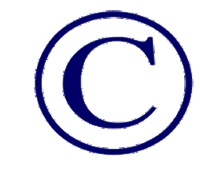|
|
Lesson 1.01: Ethics in Web DesignEthics is an area of study that deals with ideas about what is good and bad behavior. Every profession has its own set of ethical guidelines to which most of its members adhere. And while the web design industry’'s code of ethics might not be as crucial as, say, the medical industry, there are still some important ethical considerations every design professional should think about. Here are some of the most prominent rules of ethical behavior that web designers should follow:
The United State Copyright Office defines copyright as "a form of protection grounded in the U.S. Constitution and granted by law for original works of authorship fixed in a tangible medium of expression. Copyright covers both published and unpublished works." United States copyright law was first established in the Constitution in 1790. The original intent was to encourage the progress of "science and useful arts, by securing for a limited time to authors and inventors the exclusive right to their respective writings and discoveries." This original law was very broad. The intent was to protect individuals by allowing them to earn a profit on their work. The law was rewritten in 1976 but its intent remains the same.
The copyright symbol, a circled capital letter "C", is the symbol used in copyright notices for works other than sound recordings. The symbol is widely recognized, but under international law is no longer required to obtain a new copyright in most nations. The United States eliminated the copyright symbol requirement in 1989, but its presence or absence is legally significant on works published previously. To learn more about copyright as it pertains to web design, visit the websites below. In any research, it is important to properly cite your resources. For this course, you will use the ACCESS MLA Documention Guide to cite your sources. You should download and save the guide because you will need it to complete a task later in the unit. Netiquette is a set of rules about the proper and polite way to communicate with people online. Netiquette is the social code of the Internet. In many cases, netiquette is enforced by fellow users who chastise those who break a rule of netiquette. To learn more about netiquette, visit these websites: Professional netiquette is the social code of doing business on the internet. To learn more about professional netiquette, visit these websites: |
|
|
|
